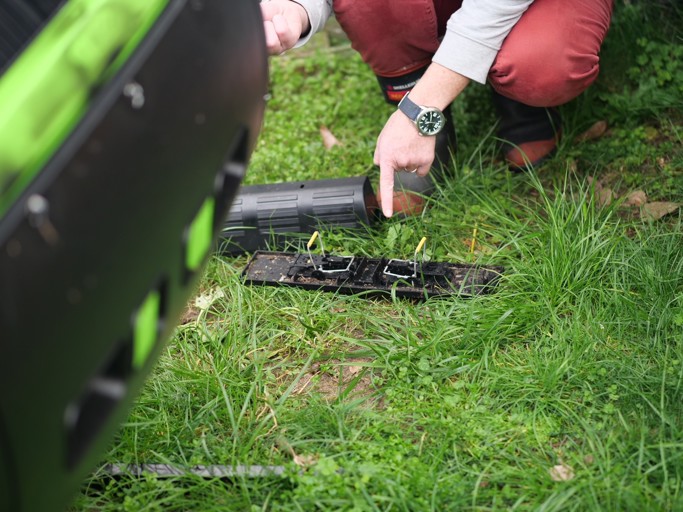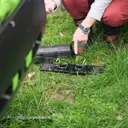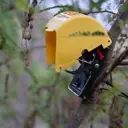Predator Free September 2022
Delivering on the government’s ambitious goal of eradicating possums, stoats and rats by 2050 requires a massive team effort.
Backyard trapping has been shown to be a very effective tool in suppressing predators.
This September, we’re encouraging you to make a difference by setting traps in your garden to give our native wildlife a helping hand.
What’s your why?
Introduced predator species threaten healthy ecosystems by disrupting them is various ways. They kill native birds and lizards, destroy fruit and native trees and threaten health by carrying disease.
Our native species are in serious trouble. Introduced predators are one of the main threats to their survival. Only one in five of our species are doing well. Over four thousand species are threatened or at risk of extinction. Some of our native species would go extinct in just two human generations without predator control.
Here is Kāpiti, we are lucky to have lots of passionate biodiversity protectors across our community doing great things to protect our native environment.
We catch up with a few to learn more about their work and why backyard trapping is so important.
Andy McKay, Team Leader, Environment & Ecological Services at Kāpiti Coast District Council
Andy, Team Leader, Environment & Ecological Services for the Kāpiti Coast District Council, thinks that community trapping projects are an important part of wider conservation efforts.
As a conservationist and ecology enthusiast with extensive land management experience, he knows firsthand the devastation uncontrolled predators can have on one of the things we love most about our homes – our backyards.
“In Kāpiti, we have a predator problem,” says Andy.
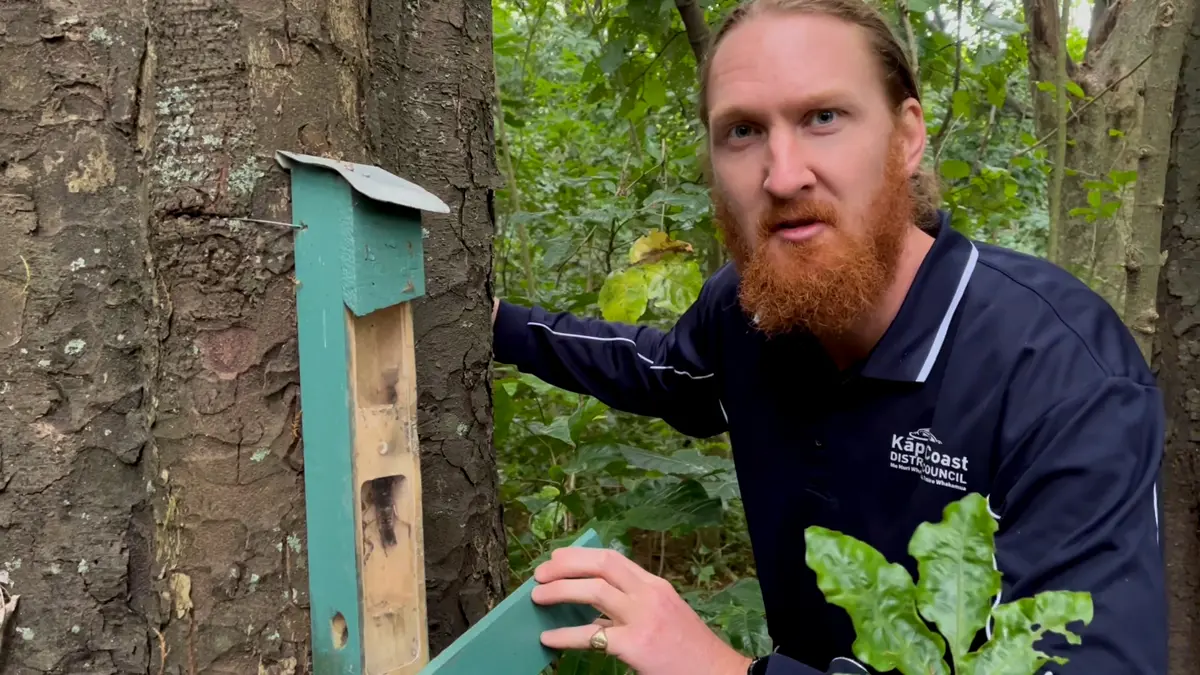
“Reducing rat populations has been repeatedly shown to increase native species populations. They are also pests in other ways - they can spread diseases, such as leptospirosis and salmonellosis, and are also commonly infected with giardia which can be transmitted into food or water supplies.
“Stoats are also significant predators of native fauna and can have impacts on larger species, such as kiwi, which are not preyed on by rats or possums.”
While big problems require big solutions, Andy says that every individual effort helps.
“Predator Free NZ estimates that having a backyard trap at every fifth urban house is enough to make a real difference to our environment and native species. We all have the power to part of the solution.”
Maree White and Amelia Geary, Predator Free Paekākāriki
Paekākāriki has always been at the forefront of biodiversity protection. Backyard trapping group, the Paekākāriki Rat Pack, was born in 2011 and was one the first in the country.
Maree’s interest in backyard trapping began when one of her chickens fell victim to a stoat in 2018. Enlisting the help of keen biodiversity protector Andy McKay, and later trapping expert and fellow Playcentre parent, Amelia, she set about protecting her coop with a range of traps, effectively preventing further poultry carnage.
It wasn’t until the country plunged into COVID-19 Alert Level 4 in 2020 and everybody was stuck at home, that the pair saw a unique opportunity to get their community working together to rid Paekākāriki of predators.
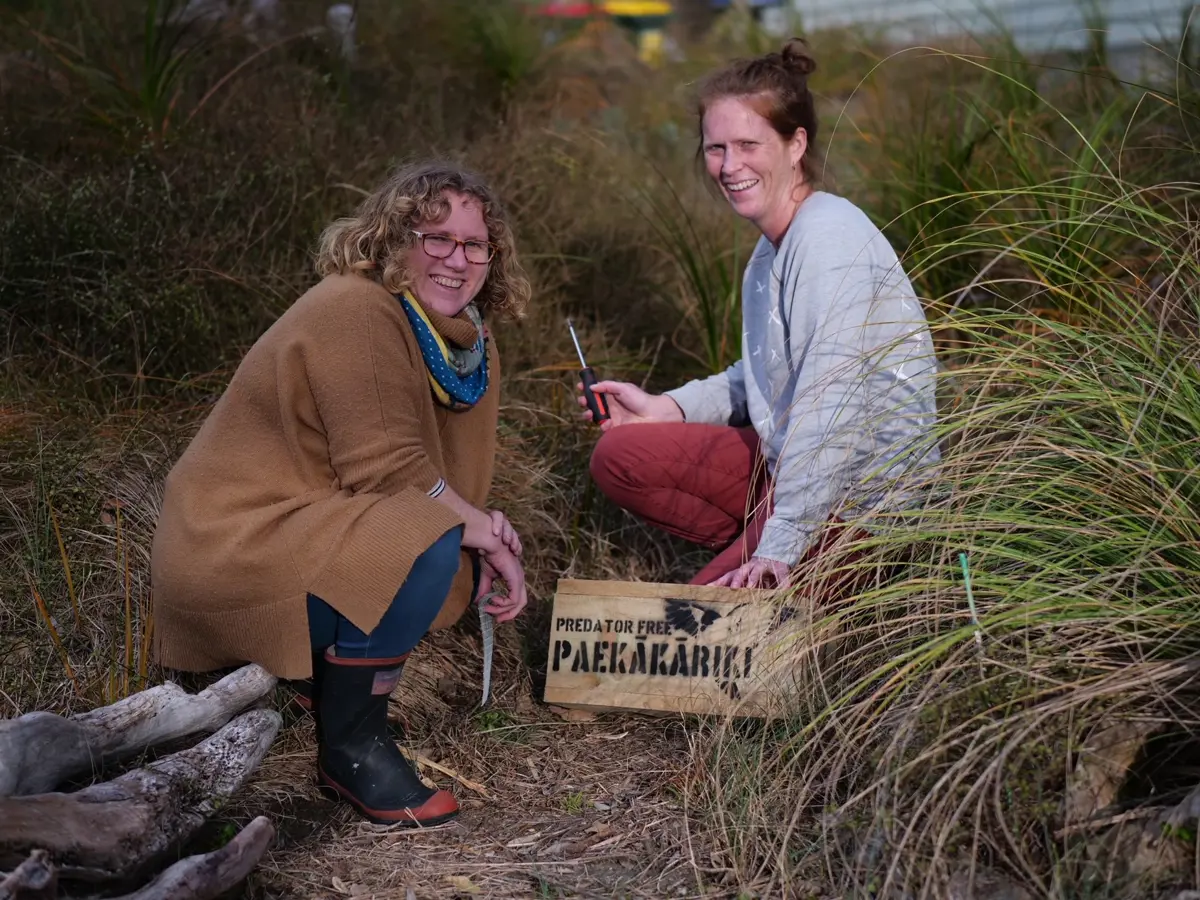
Inspired by Predator Free Wellington’s #LockdownKnockdown encouraging backyard trappers to keep the heat on pests, Amelia and Maree decided to relaunch a dwindled Paekākāriki Rat Pack as Predator Free Paekākāriki.
The goal was to have traps in every 1 in 5 properties across Paekākāriki. To do that, Amelia recognized that the traps needed to be as accessible, affordable and easy to use – so they started to make their own wooden tunnel traps.
The orders poured in after word started to get out. Once materials could be secured, Maree and Amelia recruited family and friend – including the kids – to pitch in with construction. Their production record sits at 50 traps in one day.
Two years later, over 100 traps have been distributed throughout the village, in addition to those already in circulation via the Rat Pack. The wider community also lends a variety of skills and resources to help the cause – for example Fix & Fogg in Wellington have donated peanut butter to use as bait which the Paekākāriki Fruit Supply give out free of charge to trappers.
Another victory has been establishing traps at the Paekākāriki community garden, near the composting facilities. With a volunteer now regularly checking and rebaiting the traps, three rats and eight mice have been nabbed over the last month. Regular rebaiting can make all the difference.
Ongoing communication has kept the momentum going with Amelia reporting that most people are still keeping on top of their traps. While only a small percentage are actively logging their catches, Predator Free Paekākāriki have a good understanding of trap coverage throughout the village which is really important for understanding where to focus future efforts.
Daniel Bar-Even, Chief Technical Officer at Groundtruth
For Groundtruth’s Chief Technical Officer Daniel Bar-Even, it’s all about the data.
Groundtruth, based in Paekākāriki, specialises in sustainable land management and runs www.trap.nz, a free service that allows users to record and understand predator control and biodiversity data.
Trap.nz supports more than 5400 conservation projects across New Zealand with 30,000 active users logging their trap, bait, monitoring, and biodiversity outcome data. Approximately 100 new projects are added each month.
Why is this information important? Daniel says it’s the key to working smarter to tackle New Zealand’s predator problem.
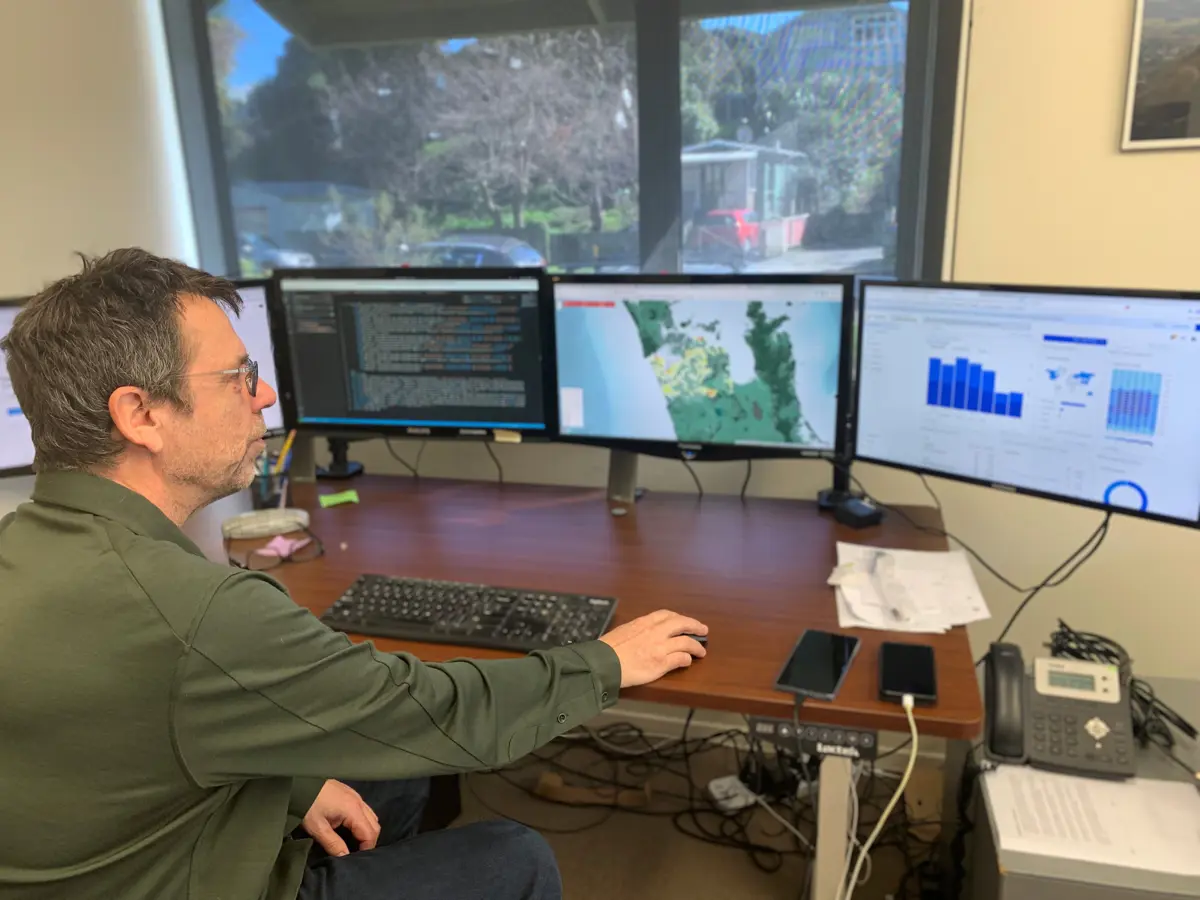
“When people start logging information about what’s happening in their traps, you can quickly and easily get a picture of where predator activity is happening over time. This makes it easier to target hot spots and understand what types of traps and bait are having the most success,” says Daniel.
“You can also start measuring the effectiveness of your efforts by recording sightings of native species. Jump on the website, create a profile and request to join the projects that are happening in your neighbourhood. There’s also a really active community forum where people can ask questions and share tips.”
Daniel stresses that also recording when you’re not actively trapping, or not catching anything is important too, to get the best picture of what’s going on.
“In terms of creating good data, logging that you have your trap set but aren’t catching anything is just as valuable – and often a good sign that your trapping is working.”
It starts in your backyard
Trapping in your backyard has loads of benefits. It can help get rid of rats from your compost bin, save your roses and fruit trees from possums, but most importantly it can make your garden a safe place for our unique native wildlife to live and feed.
A big thing you’ll notice once you start eradicating pests from your backyard is an increase in biodiversity, meaning a greater variety of flora and fauna. Things like rich dark soil, lots of different plant species, and an increase in bugs and lizards are all good signs that your trapping efforts are working.
Signs you have pests
Identifying exactly which predators are paying you a visit will help you to understand what you need to do to tackle the problem.
Have a hunt around your backyard and look for signs you have a predator problem:
- Droppings
- Footprints and tracks
- Burrows, hair or fur
- Damage to trees, plants, fruit, flowers
- Remains of other animals, their eggs or young (especially natives)
Chew cards and WaxTags are a great way to scope out predators. Chew cards are rectangular pieces of plastic corflute that have lure inserted between the layers while WaxTags have a small wax block at one end. Pests will nibble on these devices and are identified through their bite marks.
Rats and possums have large home-ranges so the more traps in your neighbourhood, the more likely you are to catch them. Have a chat to your neighbours and work together to identify pest problems.
Learn how to identify predators.
Getting started - buy, build or win a trap
A great way to get started is with a trapping tunnel. This is a box to put a rat trap inside. The tunnel is designed to protect your young family members and pets from the trap.
You can learn how to build your own.
Not keen to build your own? You can buy traps from MenzShed Kāpiti.
We are also giving away five backyard tunnel traps. Simply tell us what you want to protect from predators in your backyard. It could be that you want to see more native birds nesting in your trees, save your favourite fruit tree or encourage lizards to visit. Email your ideas to [email protected]
We encourage safe and humane trapping.
Predator Free NZ and the Department of Conservation have more great trapping tips.
Don’t forget to log your data!
Don’t forget to record your trapping data.
Recording trapping data is an important part of backyard trapping. Use the Trap.NZ website or mobile app to make a record of what you're catching and how often you're checking your trap.
Trap.NZ is a free service used throughout New Zealand for recording trap, bait, monitoring, and biodiversity outcome data. This data can help your community learn which traps are most effective and where extra work is required. It’s a great resource for sharing knowledge so make sure you check our what’s happening in your neighbourhood.
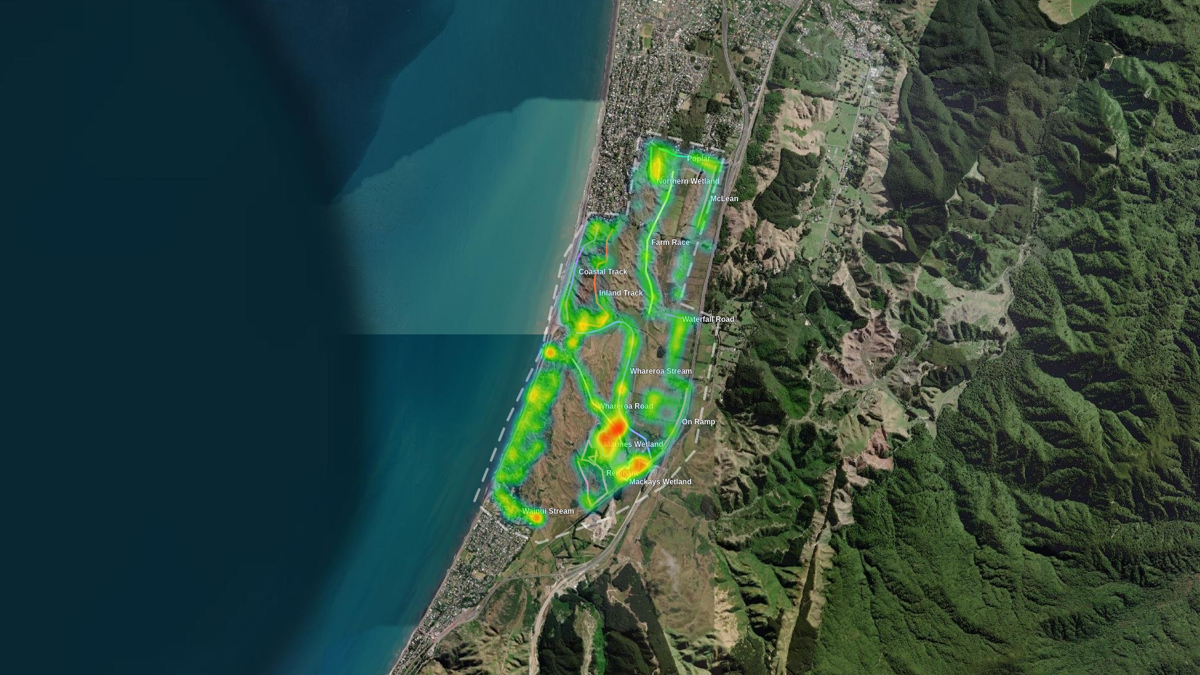 A map of predator hot spots in Queen Elizabeth Park, generated with data logged through trap.nz.
A map of predator hot spots in Queen Elizabeth Park, generated with data logged through trap.nz.
